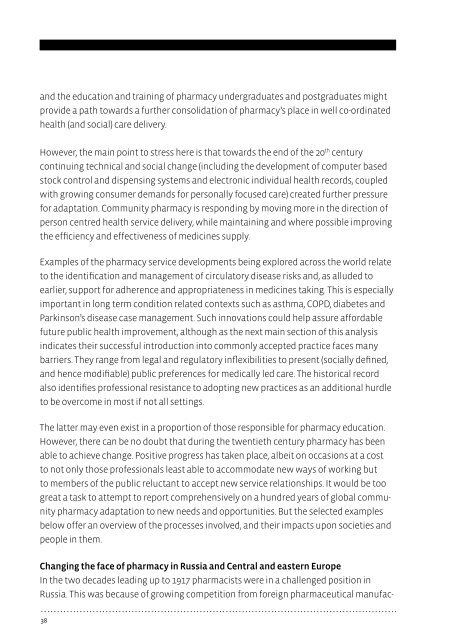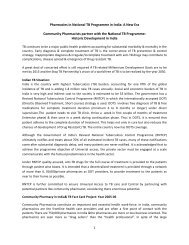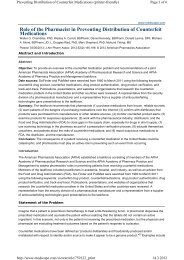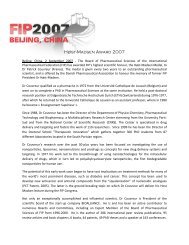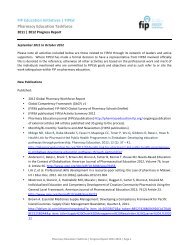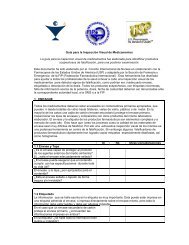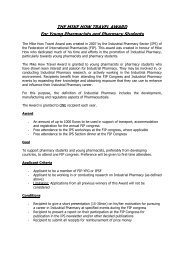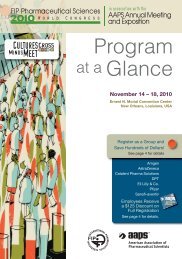Contents - FIP
Contents - FIP
Contents - FIP
Create successful ePaper yourself
Turn your PDF publications into a flip-book with our unique Google optimized e-Paper software.
and the education and training of pharmacy undergraduates and postgraduates might<br />
provide a path towards a further consolidation of pharmacy’s place in well co-ordinated<br />
health (and social) care delivery.<br />
However, the main point to stress here is that towards the end of the 20 th century<br />
continuing technical and social change (including the development of computer based<br />
stock control and dispensing systems and electronic individual health records, coupled<br />
with growing consumer demands for personally focused care) created further pressure<br />
for adaptation. Community pharmacy is responding by moving more in the direction of<br />
person centred health service delivery, while maintaining and where possible improving<br />
the efficiency and effectiveness of medicines supply.<br />
Examples of the pharmacy service developments being explored across the world relate<br />
to the identification and management of circulatory disease risks and, as alluded to<br />
earlier, support for adherence and appropriateness in medicines taking. This is especially<br />
important in long term condition related contexts such as asthma, COPD, diabetes and<br />
Parkinson’s disease case management. Such innovations could help assure affordable<br />
future public health improvement, although as the next main section of this analysis<br />
indicates their successful introduction into commonly accepted practice faces many<br />
barriers. They range from legal and regulatory inflexibilities to present (socially defined,<br />
and hence modifiable) public preferences for medically led care. The historical record<br />
also identifies professional resistance to adopting new practices as an additional hurdle<br />
to be overcome in most if not all settings.<br />
The latter may even exist in a proportion of those responsible for pharmacy education.<br />
However, there can be no doubt that during the twentieth century pharmacy has been<br />
able to achieve change. Positive progress has taken place, albeit on occasions at a cost<br />
to not only those professionals least able to accommodate new ways of working but<br />
to members of the public reluctant to accept new service relationships. It would be too<br />
great a task to attempt to report comprehensively on a hundred years of global community<br />
pharmacy adaptation to new needs and opportunities. But the selected examples<br />
below offer an overview of the processes involved, and their impacts upon societies and<br />
people in them.<br />
Changing the face of pharmacy in Russia and Central and eastern Europe<br />
In the two decades leading up to 1917 pharmacists were in a challenged position in<br />
Russia. This was because of growing competition from foreign pharmaceutical manufac-<br />
38


